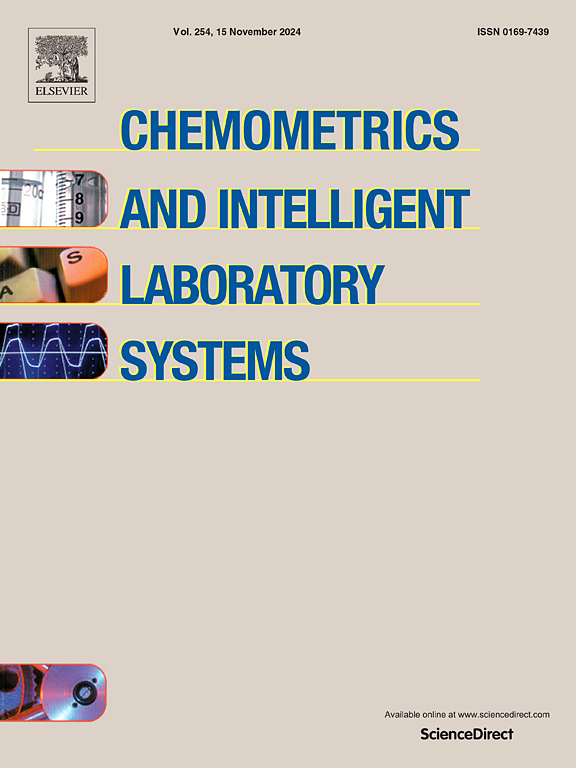AI in MRI brain tumor diagnosis: A systematic review of machine learning and deep learning advances (2010–2025)
IF 3.7
2区 化学
Q2 AUTOMATION & CONTROL SYSTEMS
Chemometrics and Intelligent Laboratory Systems
Pub Date : 2025-04-24
DOI:10.1016/j.chemolab.2025.105414
引用次数: 0
Abstract
Brain tumors present critical health challenges due to abnormal tissue growth within the brain, potentially leading to life-threatening conditions if left untreated. MRI stands as the primary diagnostic tool for identifying brain tumors, offering superior resolution and tissue differentiation compared to other imaging modalities. This systematic literature review explores the application of ML and DL techniques in enhancing the diagnosis of brain tumors from MRI scans. ML and DL algorithms, particularly CNNs, have demonstrated significant success in automating the detection and classification of brain tumors by analyzing complex imaging patterns. The review follows PRISMA guidelines, synthesizing findings from studies between 2010 and 2025. Key themes include the utilization of diverse datasets, advanced feature extraction methods, and the computational efficiency of ML and DL models. Despite notable advancements, challenges such as data diversity and model interpretability persist, underscoring the need for ongoing research to optimize these techniques for enhanced clinical outcomes in brain tumor diagnosis. The review discusses the effectiveness of CNNs, SVMs, ensemble methods, transformers and other ML approaches in improving diagnostic accuracy and reliability. It also addresses future research directions aimed at overcoming current limitations and advances in the field.
人工智能在MRI脑肿瘤诊断中的应用:机器学习和深度学习进展的系统回顾(2010-2025)
由于脑部组织生长异常,脑肿瘤对健康构成严重挑战,如果不及时治疗,可能会导致危及生命的疾病。MRI是识别脑肿瘤的主要诊断工具,与其他成像方式相比,它提供了更高的分辨率和组织分化。本系统的文献综述探讨了ML和DL技术在增强MRI扫描脑肿瘤诊断中的应用。ML和DL算法,特别是cnn,通过分析复杂的成像模式,在自动检测和分类脑肿瘤方面取得了显著的成功。该评估遵循PRISMA指南,综合了2010年至2025年间的研究结果。关键主题包括不同数据集的利用,先进的特征提取方法,以及ML和DL模型的计算效率。尽管取得了显著的进步,但数据多样性和模型可解释性等挑战仍然存在,这表明需要继续研究优化这些技术,以提高脑肿瘤诊断的临床结果。本文讨论了cnn、支持向量机、集成方法、变压器和其他ML方法在提高诊断准确性和可靠性方面的有效性。它还提出了未来的研究方向,旨在克服当前的局限性和领域的进展。
本文章由计算机程序翻译,如有差异,请以英文原文为准。
求助全文
约1分钟内获得全文
求助全文
来源期刊
CiteScore
7.50
自引率
7.70%
发文量
169
审稿时长
3.4 months
期刊介绍:
Chemometrics and Intelligent Laboratory Systems publishes original research papers, short communications, reviews, tutorials and Original Software Publications reporting on development of novel statistical, mathematical, or computer techniques in Chemistry and related disciplines.
Chemometrics is the chemical discipline that uses mathematical and statistical methods to design or select optimal procedures and experiments, and to provide maximum chemical information by analysing chemical data.
The journal deals with the following topics:
1) Development of new statistical, mathematical and chemometrical methods for Chemistry and related fields (Environmental Chemistry, Biochemistry, Toxicology, System Biology, -Omics, etc.)
2) Novel applications of chemometrics to all branches of Chemistry and related fields (typical domains of interest are: process data analysis, experimental design, data mining, signal processing, supervised modelling, decision making, robust statistics, mixture analysis, multivariate calibration etc.) Routine applications of established chemometrical techniques will not be considered.
3) Development of new software that provides novel tools or truly advances the use of chemometrical methods.
4) Well characterized data sets to test performance for the new methods and software.
The journal complies with International Committee of Medical Journal Editors'' Uniform requirements for manuscripts.

 求助内容:
求助内容: 应助结果提醒方式:
应助结果提醒方式:


